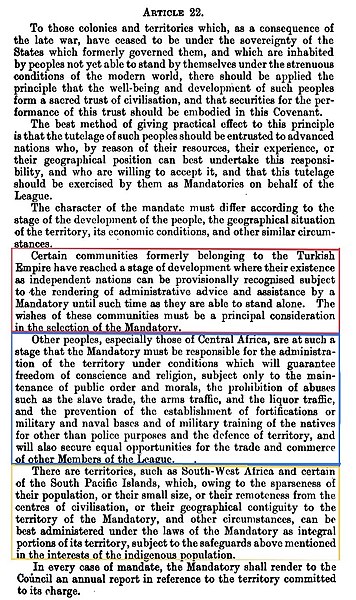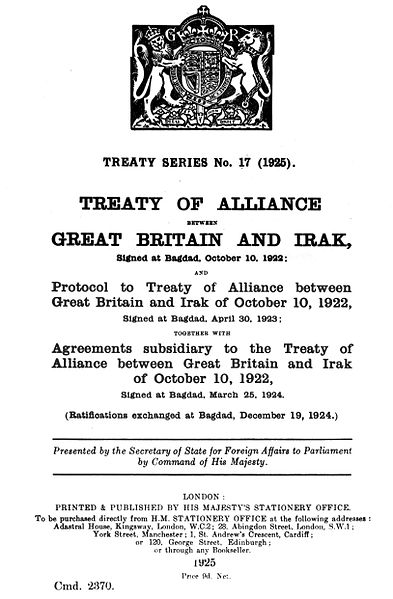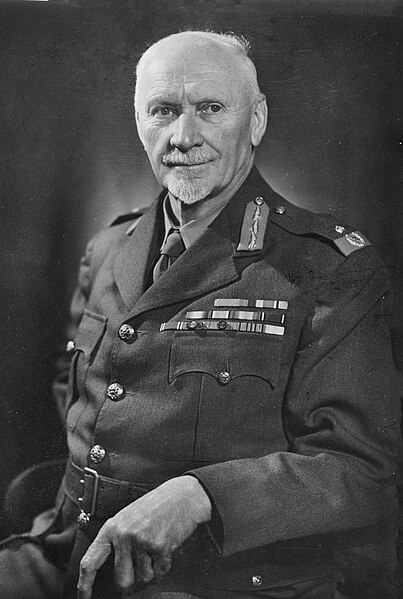League of Nations mandate
A League of Nations mandate represented a legal status under international law for specific territories following World War I, involving the transfer of control from one nation to another. These mandates served as legal documents establishing the internationally agreed terms for administering the territory on behalf of the League of Nations. Combining elements of both a treaty and a constitution, these mandates contained minority rights clauses that provided for the rights of petition and adjudication by the Permanent Court of International Justice.
Article 22 of the Covenant of the League of Nations, highlighting the three mandate classes: Red: Class A (ex Ottoman) Blue: Class B (ex German Central Africa) Yellow: Class C (ex German South West Africa and Pacific)
Image: Anglo Iraq Treaty 1922
Image: Mandate for Syria and the Lebanon
Image: Belgian Mandate for East Africa
The League of Nations was the first worldwide intergovernmental organisation whose principal mission was to maintain world peace. It was founded on 10 January 1920 by the Paris Peace Conference that ended the First World War. The main organization ceased operations on 18 April 1946 when many of its components were relocated into the new United Nations. As the template for modern global governance, the League profoundly shaped the modern world.
The 1864 Geneva Convention, one of the earliest formulations of written international law
Lord Bryce, one of the earliest advocates for a League of Nations
Jan Smuts helped to draft the Covenant of the League of Nations.
The League to Enforce Peace published this full-page promotion in The New York Times on Christmas Day 1918. It resolved that the League "should ensure peace by eliminating causes of dissension, by deciding controversies by peaceable means, and by uniting the potential force of all the members as a standing menace against any nation that seeks to upset the peace of the world".








